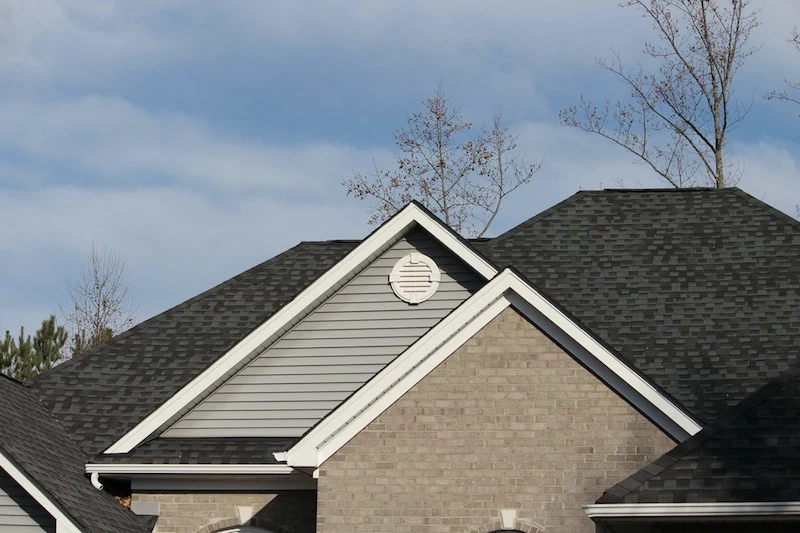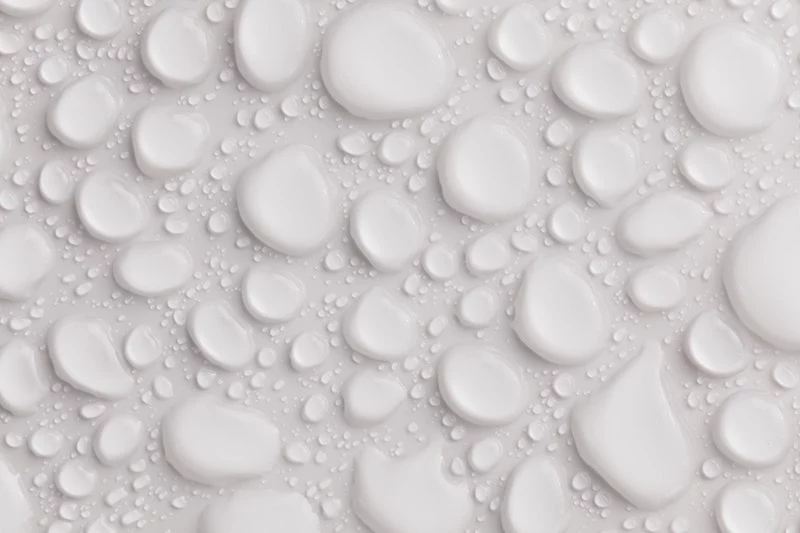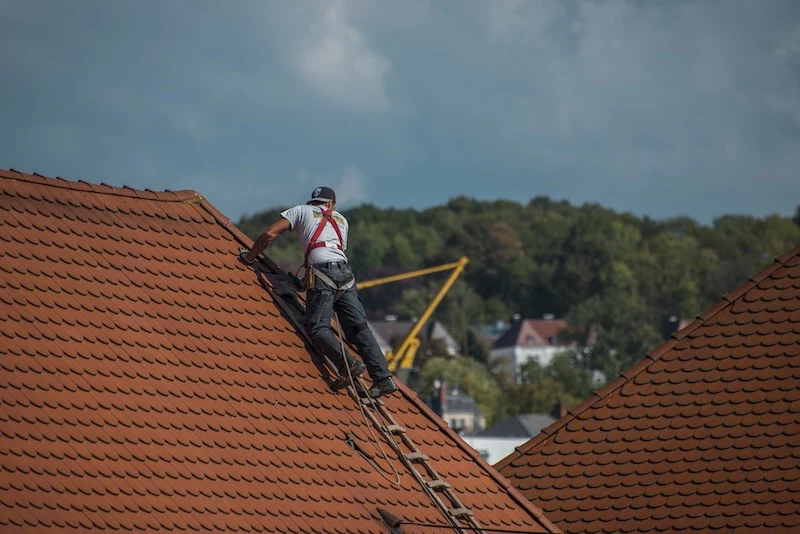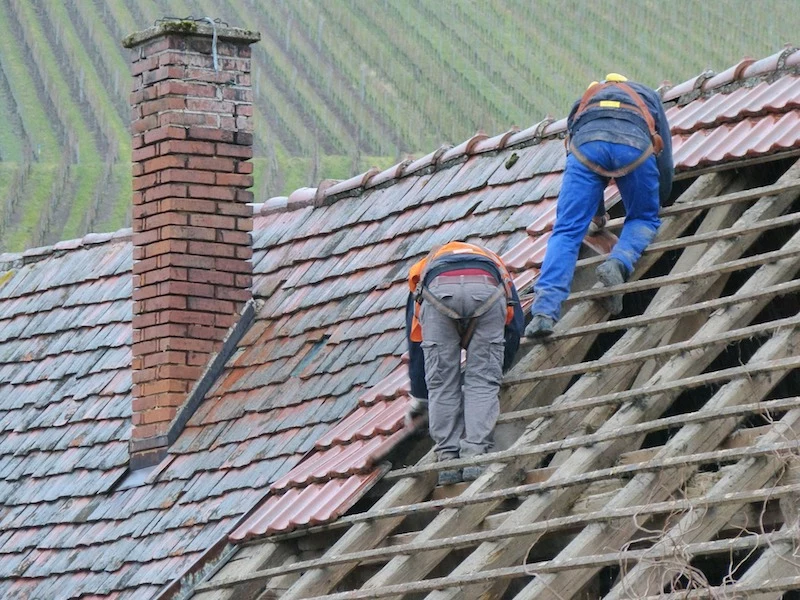Is Your Roof Trying to Tell You Something? 5 Warning Signs You Can’t Ignore
I’ve spent a couple of decades on rooftops, in every kind of weather you can imagine. And in that time, I’ve learned one thing for sure: a roof has its own way of talking. It whispers when it’s got a small problem, and it shouts when it’s about to fail. My job has always been to translate that language for homeowners.
In this article
- First Things First: Your Roof is a Team, Not a Solo Act
- Sign 1: Your Shingles Look Sick
- Sign 2: You’re Out of Time (The Age Factor)
- Sign 3: The Dreaded Water Stain
- Sign 4: The Roof is Sagging or Spongy
- Sign #5: Failing Flashing and Other Penetrations
- A Few Common (and Costly) Homeowner Mistakes
- Okay, I Have Some of These Problems… Now What?
- Inspirational Gallery
Let’s be real, a new roof is one of the biggest checks you’ll ever write for your house. So, this isn’t about selling you one. It’s about giving you the inside scoop so you can spot trouble early. Knowing the difference between a quick fix and a full-on replacement is the kind of knowledge that protects your home and, honestly, your bank account.
First Things First: Your Roof is a Team, Not a Solo Act
Before we get into the red flags, you have to understand that your roof isn’t just the shingles you see from the street. It’s a whole system where every part has a job. If one player on the team gets lazy, the whole thing starts to fall apart. It’s a chain reaction.

Here’s a quick rundown of the key players:
- The Decking: This is the wood foundation (usually plywood or OSB) that covers your home’s framing. It’s the literal base for everything else. If the decking is too thin or low-quality, the whole roof will feel spongy and won’t hold nails well over the long haul. This is NOT a place to cut corners.
- The Underlayment: Think of this as a high-tech raincoat that goes on right over the decking. It’s your second line of defense if water ever gets past the shingles. The modern synthetic stuff is light-years better than old-school felt paper. It’s way more tear-resistant and can save you from a major leak if a shingle blows off in a storm. Trust me, paying a little extra for good underlayment is money well spent.
- The Shingles (or Tiles, or Metal): This is the outer shell—the part that takes all the punishment from sun, rain, and wind. The quality and type of shingle you choose is a huge factor in how long your roof will last.
- The Flashing: This is the unsung hero. Flashing is the custom-fit metal that goes around anything that pokes through your roof: chimneys, pipes, vents, skylights. Its only job is to channel water away from these weak spots. This is where most leaks are born, usually because someone got lazy and just smeared a bunch of roofing cement or caulk on it, which will crack and fail in just a few years.
- The Ventilation: Okay, this is the most misunderstood part of the whole system. Your attic needs to breathe! Vents at the bottom (soffits) pull cool air in, and vents at the top (ridge or box vents) push hot, moist air out. Without this airflow, your attic becomes an oven in the summer, literally baking your shingles from the underside and slashing their lifespan in half. In the winter, it causes moisture buildup that leads to mold and rot.

Sign
1: Your Shingles Look Sick
The shingles are your first and most obvious clue. When I get on a roof, here’s what I’m looking for.
Curling or Clawing Shingles: Shingles should lie perfectly flat. If the edges are turning up or the corners are lifting, they’re getting old and tired. This makes them super easy for the wind to grab and rip off, and it breaks the water-tight seal between them. It’s a direct invitation for rain to come on in.
Cracked or Missing Shingles: A few shingles might get damaged from a storm or a falling branch. That’s usually a simple repair, probably costing between $250 and $500 depending on the roofer and the roof’s pitch. But if you see widespread, random cracking all over the place, it means the shingles have become brittle. They’ve lost their flexibility and are at the end of their useful life. That’s a sign of a much bigger problem.

Bald Spots and Gutter Grit: Take a look in your gutters or where your downspouts empty. See a bunch of sandy, colored grit? Those are the granules from your shingles. Their job is to protect the asphalt underneath from the sun. A new roof will shed some excess granules, that’s normal. But if you’re scooping out more than a coffee cup’s worth, or you can see black, “bald” patches on your roof, you’ve got a problem. It’s like a severe sunburn; once the protection is gone, the damage happens fast.
Buckling or Wavy Spots: This looks different from curling. You’ll see weird, wavy ripples running up your roof. This isn’t usually a shingle problem; it’s a sign that the stuff underneath is moving or wrinkled, often due to a poor installation or moisture getting into the decking. If I see buckling, my first move is to pop my head in the attic and check for moisture stains on the underside of the wood.

Sign
2: You’re Out of Time (The Age Factor)
A shingle package might say “30-Year Lifespan,” but that’s a lab number. In the real world, a roof’s true age depends on so much more.
For example, a standard architectural shingle might last 30 years in a mild climate. I’ve seen that same shingle get absolutely cooked to death in 15 years in a place with intense, year-round sun. In colder regions, the constant freezing and thawing of ice is the enemy. So you have to grade on a curve based on your local weather.
Oh yeah, and that ventilation thing? I once inspected two identical, side-by-side houses. Same build, same shingles. One roof was toast after 18 years, the other looked fantastic. The difference? The failing roof had zero intake vents for the attic. It was an oven. Proper ventilation is so crucial that most shingle warranties are voided without it.

Quick Tip: Want a simple way to check your ventilation? On a cool, crisp morning with frost on the ground, take a look at your roof. If your roof is one of the last on the block to have frost on it, it’s a good sign that your attic isn’t losing a ton of heat and cooking your roof from below.
Sign
3: The Dreaded Water Stain
A leak is the most urgent sign of all. By the time you see a brown stain on your ceiling, that water has already done a lot of damage you can’t see. Ignoring a small leak is like ignoring a small cavity—it will only get bigger and more expensive to fix.
Finding the source is detective work. Water can travel a long way from where it enters to where it finally shows up. The best way to trace it is to go into the attic with a good flashlight and look for water stains, damp insulation, or dark spots on the wood. But please, be careful!
Heads up! If you go into your attic, only step on the thick wooden joists or framing. The ceiling drywall between them will NOT hold your weight. If you’re not 100% comfortable, call a professional. It’s not worth the risk.
Sign
4: The Roof is Sagging or Spongy
This one is serious. Stand across the street and look at the lines of your roof. If any of them look like they’re dipping, bowing, or sagging in the middle, you have a structural problem. Don’t wait. Call a professional roofer or a structural engineer immediately.
A sag means the underlying framework is failing, often from waterlogged decking or even broken rafters. Sometimes it’s from too much weight, like when a crew has lazily installed a third or even fourth layer of shingles on top of old ones. When I walk on a roof, I can feel a spongy or soft spot under my feet. It’s a definite red alert and means the problem is way beyond just shingles.
Sign #5: Failing Flashing and Other Penetrations
Remember the flashing? It’s where the rookies mess up and where most leaks begin. I once traced a massive, ceiling-destroying leak back to a single, tiny hole. A satellite dish installer had missed the stud and left an exposed nail hole in the roof. Water found it, and over time, caused thousands in damage.
Professionals install intricate, overlapping metal flashing systems that are meant to last for decades. Amateurs and corner-cutters just gob on tubes of tar or caulk, which will dry out and crack in a few years, guaranteed. If you see cracking, crumbling caulk around your chimney or vent pipes, it’s a ticking time bomb.
A Few Common (and Costly) Homeowner Mistakes
- Power Washing Your Roof: Never, ever do this. It blasts the protective granules right off your shingles and can force water underneath them.
- Ignoring a Small Leak: There is no such thing as a small leak for long. It will always find a way to become a big, expensive problem.
- Allowing a Third Layer: Don’t let a contractor talk you into putting a new roof over two existing layers. It’s against most building standards for a reason—the weight is too much for your home’s structure.
Okay, I Have Some of These Problems… Now What?
If you’re seeing signs of widespread failure—like curling and bald spots all over—you’re likely looking at a full replacement. Budget-wise, this is a major project. For an average-sized house, a new asphalt shingle roof can run anywhere from $8,000 to $18,000, and can go higher for premium materials or complex roofs. A simple repair for a few blown-off shingles might only be a few hundred dollars, but it’s just a band-aid if the whole system is old.
When you call for estimates, ask them specifically about their plans for underlayment, ventilation, and flashing. A good roofer loves to talk about this stuff. A bad one will just give you a price on shingles. Get at least three written quotes, check their insurance, and look for a company that’s been around your area for a while. Your roof is too important to leave to the lowest bidder without doing your homework first.
Inspirational Gallery
Architectural Shingles: Often called dimensional shingles, these are the new standard. Brands like GAF Timberline HDZ or Owens Corning Duration offer a thicker, multi-layered look that adds depth and character to your roof. They have a longer lifespan (30-50 years) and better wind resistance.
Traditional 3-Tab Shingles: A single-layer, flat-looking shingle. It’s the more budget-friendly choice upfront, but typically only lasts 15-20 years and is more susceptible to wind damage. For most homes, investing in architectural shingles pays off in longevity and curb appeal.
According to the National Roofing Contractors Association, a staggering 40% of all roof failures can be attributed to improper installation, not the materials themselves.
This is why vetting your contractor is just as critical as choosing the right shingles. A certified installer, proper nailing patterns, and meticulous flashing work are the difference between a roof that lasts 15 years and one that lasts 30.
Will my homeowner’s insurance pay for a new roof?
It depends. Insurance typically covers damage from a specific event, like a hailstorm, fallen tree, or extreme wind—often called an
The Metal Roof Renaissance: Once reserved for barns or commercial buildings, standing-seam metal roofs are now a chic, high-performance choice for modern homes. They are exceptionally durable, fire-resistant, and reflect solar heat, which can lower cooling costs. While the initial investment is higher than for asphalt shingles, their 50+ year lifespan often makes them the last roof you’ll ever need to buy.
- Reduced insurance premiums in hail-prone areas.
- A potential increase in your home’s resale value.
- Peace of mind during severe weather.
The secret? Ask your roofer about UL 2218 Class 4 impact-resistant shingles. These are specifically designed to withstand significant hail and debris impact, making them a wise investment in storm-heavy regions.
A cool roof can be up to 50–60°F (28–33°C) cooler on its surface than a traditional dark roof during a hot summer afternoon.
This drastic temperature difference means less heat is transferred into your attic and home, significantly reducing your air conditioning load. Look for shingles with solar-reflecting granules, often labeled as
Choosing a shingle color is about more than just matching your siding. A dark, charcoal roof can make a tall house feel more grounded and substantial. Lighter grays or tans can make a smaller home appear larger. Consider a variegated color blend, like a weathered wood or slate look, to add texture and hide minor imperfections or stains over time.
Before you sign a contract, make sure you’ve asked the right questions. A reputable roofer will have no problem answering them.
- Are you licensed and fully insured (liability and worker’s compensation)? Can I see the certificates?
- Will you be using subcontractors for any part of the job?
- What specific shingle brand and underlayment (e.g., synthetic) are you proposing in your estimate?
- How will you protect my landscaping and siding during the tear-off and installation?
- What is your warranty on both materials and labor?
A word on ice and water shields: This isn’t just an optional upgrade; in many climates, it’s a necessity. It’s a specialized, self-adhering waterproof membrane applied directly to the decking along the most vulnerable areas—eaves, valleys, and around skylights or chimneys. It forms a watertight seal around the shanks of roofing nails and is your best defense against leaks from ice dams in winter or wind-driven rain.
Ever heard of










